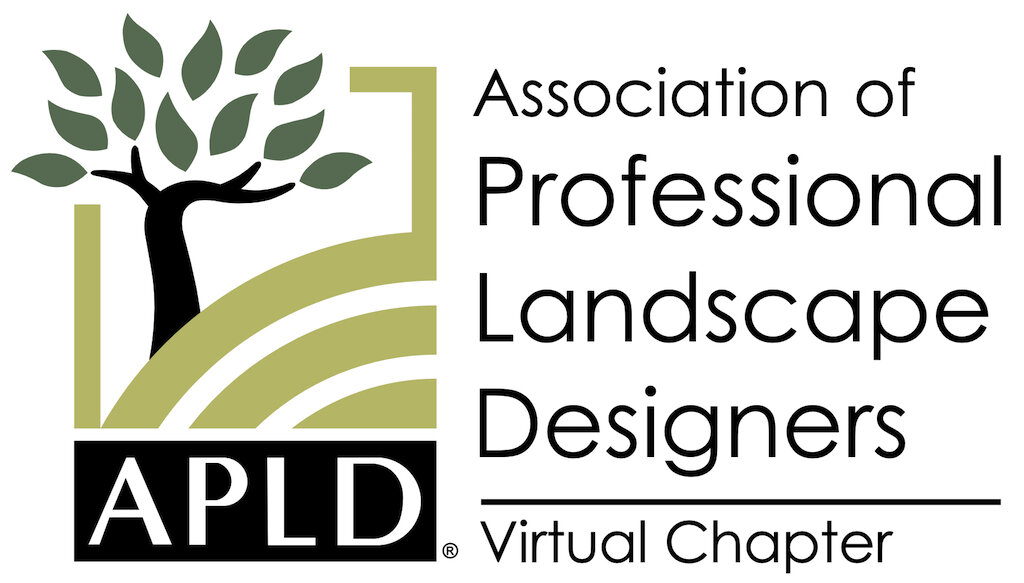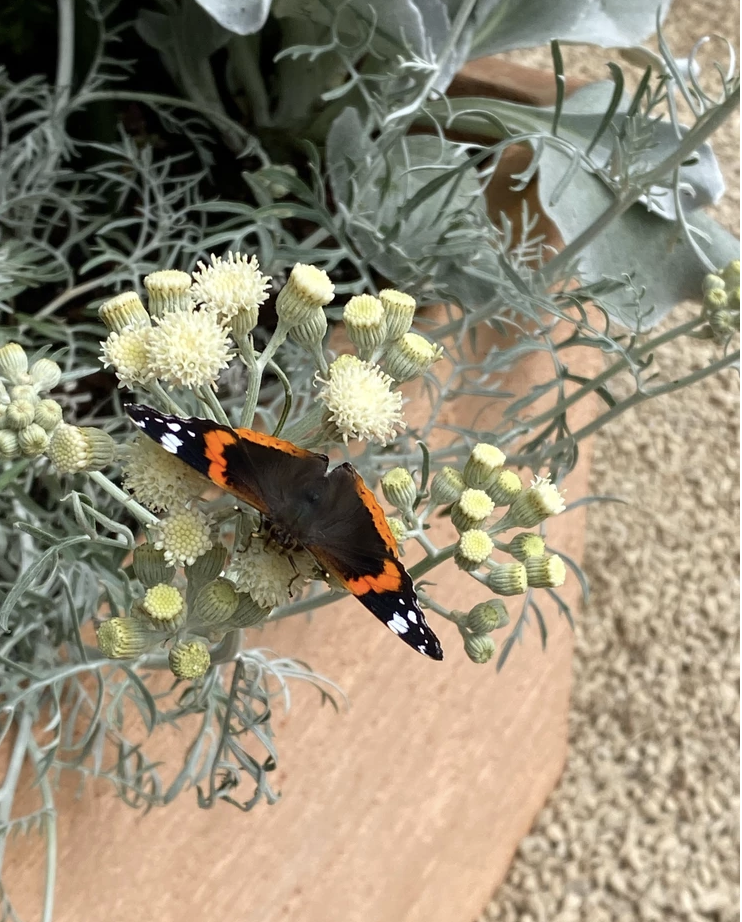The Nitty Gritty Details On How To Enter The Chelsea Flower Show
By Ellen Johnston, APLD VC member
What happens when your dear friend and fellow APLD Designer texts you and says she’s been accepted to the Royal Chelsea Flower Show in London, England?
Why, you immediately offer your help, book an AirBnB, get your plane tickets, and head off to London!
My friend Tanya moved to Mallorca, Spain, from Dallas, in the fall of 2019. Eventually she joined Johanna Norlin and became the other face of Mallorca Garden Design.
Entering a prestigious flower show was a personal, long-term career goal for Tanya, and together with Johanna, they decided this was the year. After a two-year COVID hiatus, the 2022 Spring Chelsea Flower Show was back, May 22-29. They entered the relatively new category of “Container and Balcony Gardens,” designing for a 10 x 13’ space.
But rather than focus on entries (Please go to www.rhs.org.uk to see the entries, especially the show gardens), I’d like to share some behind-the-scenes, more nitty gritty information, of how you go about entering the Chelsea Flower Show.
How does entering work?
First, you need to commit and start working on your application about one year in advance. There are multiple layers of planning and design requirements, and you need to be very motivated and organized. You also need to accept that countless, non-income producing hours will be devoted to The Show… you have to really want to do this.
The competition to enter is always tough. Assess the categories and consider which would work best for you. Newer categories are opportunities to create something original and fresh. Your space’s use of plantings and materials should be unique and expertly designed. Be sure to know your audience. English gardeners are very sophisticated and their gardens tend to be heavily planted. Many may never have been to the warm Mediterranean, but they can relate to having large custom containers on their small patio. Using familiar plantings and garden elements that visitors can relate to in surprising new ways are what the judges are looking for.
Find your story and stick with it. Their entry told the story of the many layers of the Mallorcan landscape. The tranquil waves of the sea, the weathered cliffs, and textured stone were some of hardscape elements echoed in the design. Plus, planting has to be on point. This is judged by the RHS.
While your creative side is working, you are required to solicit sponsors. Sponsorship information must be submitted with your application, including the status of each potential sponsor! Fortunately, being a sponsor at Chelsea is very respectable—a means of elevating a brand and generating interest. In-kind donations of time and treasure count as sponsorship, but you are responsible for securing them. You are also responsible for submitting all your sponsor information and copy for the program.
Leave plenty of time to work on your entry packet—you can’t rush it. The application requirements are VERY intense—comparable to the APLD Certification. The packet must include a master plan, layout plan, hand-rendered 3D perspectives, sections, construction drawings, a detailed design intent, client proposal, the preliminary planting plan, and the past experiences of the designer. Realize that if your entry design differs from your submission, the judges will take a sizable deduction. You need to be confident you can deliver what is submitted with your application. A full cost estimate for implementing your garden space, approved by your contractor, is submitted, along with a detailed application for RHS grant monies.
You’ve been accepted! Now what?
Once you have been accepted, less than 5 months remain to locally outsource all the hardscape materials and plants to satisfy sustainability requirements. For this reason, Zoom was invaluable. For instance, the granite boulders were selected via Zoom from a Cornwall stone yard, and discussions on how they were to be hand carved by a local mason were decided on a video call as well.
In addition, your chosen nursery must know “Chelsea Quality” and let you reserve specimens well ahead of time. “Chelsea Quality” means near perfection—so, no browning, dust, broken stems, and always perfect blooms. I actually saw lint specs being removed with a tweezer!
You must market yourself. Send out as many press releases as you can and market yourself using all available social media outlets. Publicity is not only important for you, but also for your sponsors.
Budget plenty of money for your travel—lodging (reserve as soon as you know you are accepted), numerous Uber rides, food and incidentals. Also, be sure to factor in time away from your business—it will approach three weeks. Plus, there are additional expenses to be aware of. A mandatory one million dollar insurance policy and significant printing costs for your Garden Information Cards (10,000 were required) are two. However, the latter is likely to change for sustainability reasons, and many attendees actually preferred not to have printed information.
Leave enough time for everyone who will be attending with you to obtain Security Badges. You will need to submit passport-like photos.
Unglamorous paperwork, complete. Let’s start talking about the actual garden!
Deliveries and build out begins a week before the show in the category of container gardens. Safety vests and steel toed shoes were mandatory and available to borrow.
The Balcony and Container entries received a lot of attention. Be prepared for a full week of steady traffic, rain or shine. It’s important to have someone, like me, be available at the garden at all times. You’ll have plenty of hand-outs, but there are always questions.
The Glitz and Glamour
The rewards were numerous, starting with the most tangible one, a Silver Medal! There were also more personal rewards, like achieving a huge career goal. The garden also won the admiration of the Queen! HRH stopped her royal golf cart at the booth and had a discussion about its uniqueness with her guide.
Plus, press coverage of the garden was exceptional. The designers were interviewed by the BBC, and several British garden celebrities were also filmed in the garden, including the great Monty Don.
What Does It Cost?
By now you must be very curious about the overall cost. The RHS implies the minimum to budget for the smaller entries is around $15,000.00 (or pounds).
For this entry, gross expenses were over $25,000, not including any potential income lost due to time away.
In order to recoup some of the costs, plan to sell as many design elements as possible. The bench, granite bowl, and custom planters were sold, and the undamaged plants were returned for a charitable donation.
So, was it worth it? Of course it was for us! And, there’s always the chance a Londoner will want an award-winning Chelsea Flower Show Landscape Designer for their wonderful second home in Mallorca!





